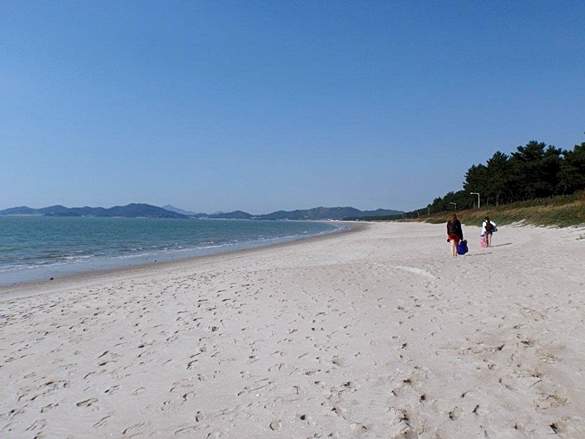Tourists and TEFL teachers coming to South Korea are often met with the same uninspiring guide books written by people who never seem to have stepped foot out of Seoul. This has led to the totally fictitious impression that there is very little to do in Korea. Nothing could be further from the truth. Sure the major sightseeing spots are worth a visit but there’s only so many times you can pose with a stony-faced soldier at the DMZ before you begin to wonder what else might be out there. Take a trip outside the gleaming towers of Seoul and the beaches of Busan and you may just find yourself in a whole new country.
The bizarre pagoda temple of Horse-Ear Mountain
Nestled between two giant mounds of rock which Koreans call “Maisan” (or horse ear mountain) sits Tapsa temple. Between 1885 and 1915 a Buddhist monk named Yi Gap Yong built over 100 stone pagodas here from the surrounding stones, all without mortar. A century later, 80 of these still stand in the grounds of the temple making this one of the most outlandish spots on the peninsula. See if you can spot the random piles of stones in hollows high up in the cliff face next to a solitary golden Buddha statue which looks out over the valley.
Spa-land
In the shadow of Horse Ear mountain is one of the most individual and elaborate spa experiences in the country. Jinan Red Ginseng spa includes a pool filled with various water jet massage beds, a hot mud sauna where cool water comes showing down from the ceiling to wash you off, a herbal room where you lay on straw in a wooden ‘manger’, a low lit ‘sound floating room’, novelty bucket showers, warm pebble beds, a hot wind room, roof-top hot pools, tipis and a huge circular room where thick jets of white bubbles spurt up from holes in the stone seats and cover everyone in a layer of white foam. If that’s not enough, a day out here costs around $30.
Jurassic park (kinda)
Sado Island in the South Sea is about as off the beaten track as it’s possible to get. A quick Google search will show you that, unlike its Japanese name-sake, the island doesn’t even merit a Wikipedia page and is instead classified as no more than a ‘populated place.’ Despite this, and in typical Korean style, you will find a visitor’s centre, information points, a mapped walkway and two huge T-rex models that loom menacingly out of the sea mist. This infrastructure exists because of the discovery of a trail of fossilised dinosaur footprints on the rocky beach here. These, along with numerous other sites along the southern seaboard, make up Korea’s ‘Cretaceous Dinosaur Coast’. The island is also home to a tiny village, seemingly the sole preserve of elderly ladies and cats, and beautiful coastal walks. Head down to Yeosu harbour, find a boat and see where the wind takes you.
White sand and salt galore
Jeungdo island off the south west coast is one of Korea’s designated “slow cities”; quaintly described as “an analogue journey in a highly digital nation”. Practically this means superb white sand beaches, free camping under the shade of the pine forest, and perhaps most excitingly, rent-able bikes and electric scooters to explore this little piece of paradise. The area is famous in Korea for its slat harvesting and those feeling the need for a little culture can find it in the salt museum, the mud flats eco exhibition hall and the annual mud flats festival in August (when Korean authorities think they’re on to a winner they damn well run with it). The island is connected to the mainland by a bridge and has a reliable bus service which drops off near the El Dorado resort. Head out just as Koreans stop camping and go back to school in early September and get the whole place to yourself.
Fly through the air with the greatest of ease…
Herb Hillz is a self-styled eco park and zip line land. Situated just outside the city of Daegu, the park has recently developed its eco-adventure, a course of zip lines, ladders, cargo nets and climbing walls set high up in the tree tops. Adventurers are provided with safety equipment and a short briefing (in Korean but not hard to follow) before being let loose on the forest. The longest course can take almost an hour to traverse and is physically and mentally exhausting but totally worth the effort. For the less daring there is herb planting, herb soap making, woodland crafts and bumper cars.
This list barely scratches the surface of all there is to see and do in the Land of the Morning Calm. So step out of the city, get on a bus, and go and explore this wonderful country; one bizarre step at a time.

